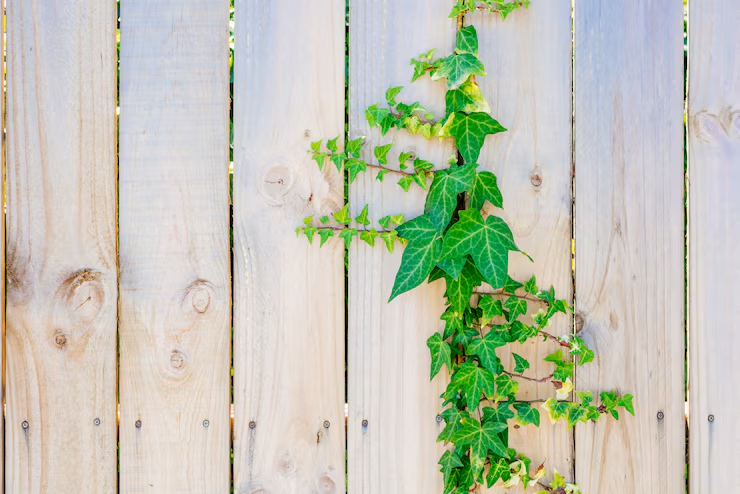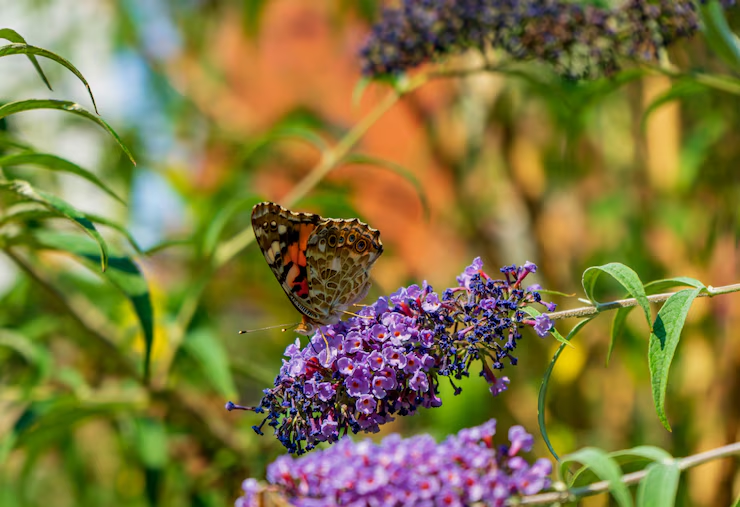As someone who spent years nurturing my garden with care and patience, I’ve learned that not all plants are good plants. Some of them, despite their charm or availability at local plant nurseries, can wreak absolute havoc on a garden once they settle in. I’ve dealt with my fair share of invasive species, and I can tell you that it’s not just frustrating but also exhausting. These plants grow very fast, choke out your favorites, and sometimes even spread into your neighbors’ yards, turning a private problem into a neighborhood crisis.
Knowing which plants to avoid is half the battle. So, in this article, I want to walk you through the top invasive plants I believe every gardener should keep far away from their yards. These plants might look harmless or even beautiful, but trust me, they come with a cost.

The Not-So-Gentle Spread of English Ivy
The first time I saw English Ivy, I thought it was elegant and almost storybook-like. Its trailing vines and waxy green leaves looked perfect draping over the fence or climbing up an old tree. But once I planted it, I quickly realized I had invited an unrelenting force into my yard. English Ivy grows fast, and it doesn’t respect boundaries. It spread across my flower beds, climbed trees, and started choking out everything in its path.
What makes it even more problematic is how difficult it is to remove. Even when I cut it back, it seemed to come back twice as strong. Worse yet, it started damaging the brickwork on my garden shed. I later learned that it can degrade wood if left unchecked. Removing it required multiple weekends of physical labor, and even then, a few stray roots kept trying to return the following season.
Japanese Knotweed: A Botanical Horror Story
Japanese Knotweed might sound exotic and interesting, but it’s the plant I fear most. I’ve never planted it myself, but a neighbor’s infestation ended up creeping into my yard. That was enough to teach me the lesson. This plant doesn’t just grow, but it conquers. Its bamboo-like stalks look harmless at first, but the roots are a different story. They can grow meters deep and wide, and they’re capable of penetrating concrete, asphalt, and even building foundations.
I remember doing some light digging near the property line and finding a tangled mass of roots thicker than my arm. I realized it wasn’t from anything I’d planted. That was the moment I knew knotweed had arrived. Getting rid of it took a professional team, multiple chemical treatments, and several years of monitoring. It taught me that even a small clump of Japanese Knotweed can lead to a long-term war, not just a gardening task.
Bamboo: A Zen Garden’s Worst Nightmare
I’ve always loved the idea of a peaceful bamboo grove swaying in the breeze, and I know I’m not alone. Bamboo seems like the ultimate low-maintenance, high-impact plant. Unfortunately, certain types of bamboo, especially running varieties, are anything but low maintenance. A friend of mine installed a bamboo screen for privacy, and within a year, the roots had tunneled into her vegetable garden and started sprouting stalks in unexpected places.
When she tried to dig it up, the roots had woven themselves like a net beneath her yard. She had to rent machinery just to get a portion of it out. That experience was enough to make me swear off bamboo forever unless it’s in a pot. The hard truth is that many homeowners don’t realize that bamboo can become a full-blown infestation that’s nearly impossible to remove without drastic measures.
Mint: A Kitchen Herb with a Mind of Its Own
This might surprise some people, but mint is one of the most invasive plants I’ve ever dealt with. I planted it once, naively thinking I’d enjoy fresh mojitos and tea leaves all summer. At first, it stayed polite and manageable. Then it found a crack in the garden border, and that’s when things got out of hand. Within months, I had mint popping up on the opposite side of my yard, in between pavers, and even in a flowerpot where I’d never put it.
What’s tricky about mint is how deceptively innocent it seems. It smells nice, it’s useful, and it’s easy to grow. But that last part is exactly the problem. Its roots send out runners underground and can colonize huge areas before you even realize what’s happening. I now keep all mint confined to containers, and I warn every beginner gardener to do the same.
Wisteria: From Romantic to Ruthless
There’s no denying that Wisteria is one of the most breathtaking vines you can grow. The cascading purple flowers look like something out of a dream. But behind that beauty is a plant that will devour your yard if you turn your back on it. I once tried growing Wisteria over an arbor, thinking it would create a lovely garden focal point. Within two years, it had completely engulfed the structure and started pulling it apart with its weight.
Wisteria grows fast, climbs high, and gets thick. It wraps itself around anything it touches, like trees, trellises, and fences, and doesn’t let go. Worse, it sends out underground shoots that sprout far from the original plant. Cutting it back only encourages it to grow more vigorously. I eventually had to remove the entire arbor and start over with a less aggressive climber. Wisteria taught me that beauty isn’t always worth the maintenance.
Morning Glory: A Misleading Name for a Persistent Pest
I used to love morning glories. Their cheerful flowers and quick growth made them a favorite of mine, especially when I wanted fast coverage for a bare patch. But once they went to seed, the story changed. Morning glories reseed themselves with alarming speed and seem to pop up everywhere the following season. I pulled dozens out of my raised beds, flower borders, and even cracks in the sidewalk.
What frustrated me most was their ability to strangle other plants. The vines twist around everything they can reach, and they’re surprisingly strong. One summer, I found them choking out my tomato plants and pulling down a trellis I’d built for beans. I’ve since learned to admire morning glories from afar, but never again will I let them run free in my yard.

Butterfly Bush: Not as Beneficial as It Sounds
This one was a bit of a heartbreaker for me. I planted a butterfly bush because I wanted to support pollinators and bring more butterflies into my garden. And yes, the butterflies came, but so did the headaches. This shrub grows fast and reseeds aggressively. Over the years, I started finding little butterfly bush seedlings in places I’d never planted them. Worse, I learned that while adult butterflies like the nectar, the plant doesn’t support their full life cycle because it’s not a host for caterpillars.
In some regions, butterfly bush is now considered a noxious weed. I ultimately replaced it with native shrubs that provide both nectar and food for developing butterflies.
Creeping Jenny: Groundcover That Doesn’t Know When to Stop
Creeping Jenny is one of those plants I bought on a whim. It was advertised as a bright, trailing groundcover perfect for softening edges and filling in gaps. And it was, until it wasn’t. The problem is that Creeping Jenny doesn’t recognize limits. It quickly overflowed its designated area and began weaving itself into other beds. Its bright foliage was hard to miss as it crept into places it didn’t belong.
I tried pulling it up, but like many invasive species, it regenerates from even the smallest root fragments. Even after digging deep and replacing soil, it came back. Eventually, I resorted to a full-season effort of weeding, smothering, and repeating the process just to get it under control. Creeping Jenny taught me that even small, soft-looking plants can be surprisingly ruthless invaders.
If you have a problem with invasive plants in your garden, here’s a book that might help you.
If you liked this article, here’s what to read next: Transform Your Small Space with These 10 Storage Tips